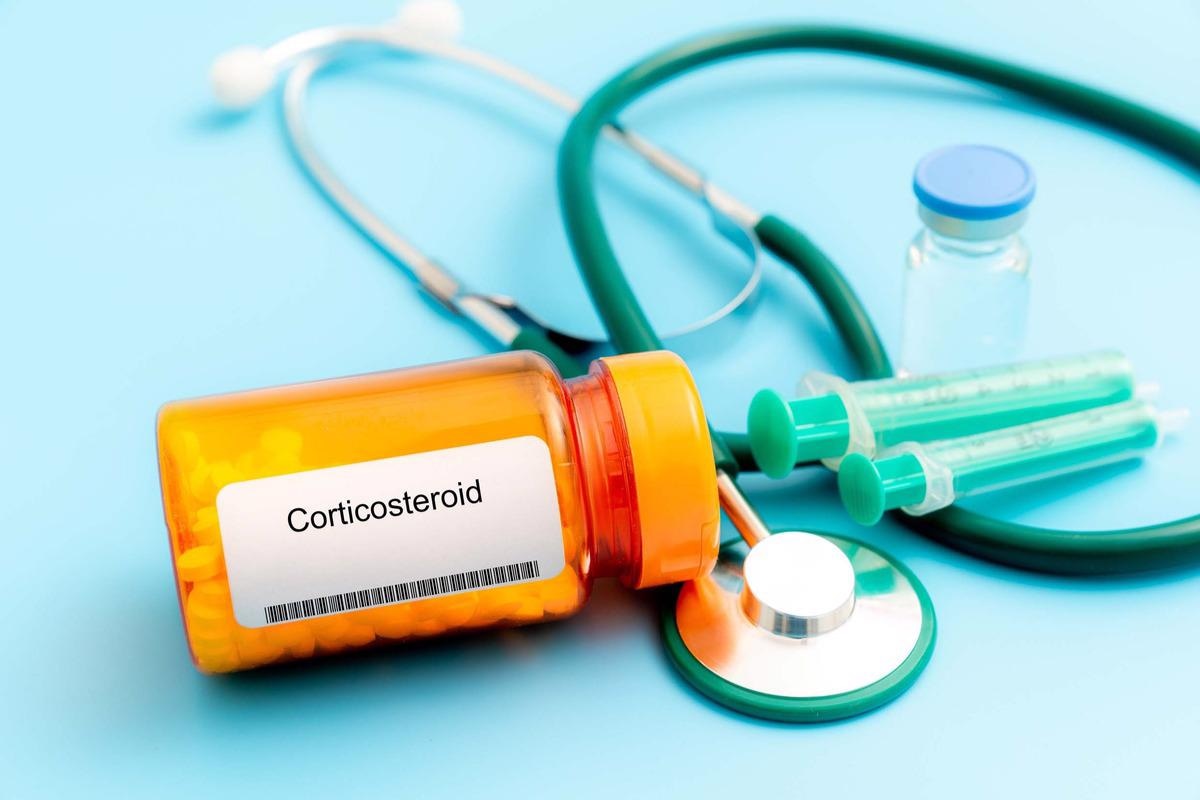The effect of corticosteroids on mortality in hospitalized COVID-19 patients

In a recent study posted to the medRxiv* preprint server, researchers assessed the impact of modern causal inference methods in estimating the effect of corticosteroids against coronavirus disease 2019 (COVID-19)-related mortality.

Observational research has provided great opportunities to understand the causal effects in the absence of randomized trials. However, the accuracy of observational research is dependent on various analytical and design choices.
About the study
In the present study, researchers described the advantages of using modern causal inference methods compared to standard research approaches in estimating the effect of corticosteroids on mortality rates caused by severe acute respiratory syndrome coronavirus 2 (SARS-CoV-2) infections.
The approach proposed by the team that used modern causal inference was a question-first approach. This method used a target trial framework and a roadmap that outlined causal inference. The roadmap used helped design a study free from time-alignment and similar design biases and mitigated model misspecification bias with estimators of optimal machine learning. The team also described one randomized trial that could hypothetically analyze the impact of corticosteroids on patients suffering from severe COVID-19.
The hypothetical trial population comprised adults admitted due to COVID-19 to either New York-Presbyterian Hospital (NYPH)/Weill Cornell, Lower Manhattan Hospital, or NYPH Queens. The infections were confirmed by performing reverse transcriptase-polymerase chain reaction (RT-PCR) assays on nasopharyngeal swabs collected from the patients. The team randomized the patients on the first day of hospital admission to receive either standard care with corticosteroid administration or standard care without any corticosteroid treatment.
The dosage of the corticosteroid administered was 0.5 mg per kg of bodyweight of methylprednisolone corticosteroid, which was equivalent for 24-hour periods for six days. The corticosteroids included in the study were hydrocortisone, prednisolone, prednisone, methylprednisolone, and dexamethasone. The team defined severe hypoxia criteria as the initiation of high flow venti-mask, nasal cannula, invasive or non-invasive mechanical ventilation, or an oxygen saturation level of less than 93%.
The primary outcome of the study included mortality reported within 28 days of randomization. The estimand of interest was variation in the mortality rates within 28 days between the two randomized groups.
The target trial emulation used data from patients who met the inclusion criteria of the study between 3 March and 15 May 2020. The team obtained information related to demographics, intubation, comorbidity, death, and hospital discharge from electronic health records. The participants were monitored for 28 days after hospitalization till they were discharged or transferred to a different hospital. The team evaluated the impact of a hypothetical dynamic treatment schedule wherein each patient was treated for six days with corticosteroids if and when the patient displayed severe hypoxia.
Results
The study cohort comprised a total of 3298 patients having a median age of 65 years with almost 60% men and a median body mass index (BMI) of 27. Approximately 31% of the patients had diabetes mellitus, 14% had coronary artery disease, 54% had hypertension, and 4.8% had kidney disease. A total of 1690 patients satisfied the criteria for randomization for severe hypoxia, while 423 patients reported a history of corticosteroid receipt during the follow-up period. Moreover, 699 patients succumbed within 28 days of randomization.
The team also noted that 20% of the patients who completed the study duration did not receive any corticosteroid treatment, while 30% of the patients died after corticosteroid treatment. The estimated rate of mortality was 32% among individuals who received no corticosteroids while 23% of the patients who received corticosteroids for six days displayed severe hypoxia. This indicated a reduction of 9.6% mortality rates between the corticosteroid treatment and the hypothetical non-corticosteroid treatment groups.
In the target trial emulation study, among the 1690 patients who met the criteria of hypoxia, 72 patients were treated with corticosteroids within a day of hypoxia diagnosis, while 191 hypoxic patients received corticosteroids within five days. Among these, 18 and 451 patients succumbed within one and five days of hypoxia without any corticosteroid treatment, respectively.
Conclusion
Overall, the study findings showed that the current standard used for clinical research could not sufficiently recover an appropriate treatment approach as opposed to a modern causal inference method. The researchers believe that the present study showed the significance of incorporating such innovative methods into future research designs.
*Important notice
medRxiv publishes preliminary scientific reports that are not peer-reviewed and, therefore, should not be regarded as conclusive, guide clinical practice/health-related behavior, or treated as established information.
- Hoffman, K. et al. (2022) "Corticosteroids in COVID-19: Optimizing Observational Research through Target Trial Emulations". medRxiv. doi: 10.1101/2022.05.27.22275037. https://www.medrxiv.org/content/10.1101/2022.05.27.22275037v1
Posted in: Medical Science News | Medical Research News | Disease/Infection News
Tags: Body Mass Index, Coronary Artery Disease, Coronavirus, Coronavirus Disease COVID-19, Corticosteroid, covid-19, Dexamethasone, Diabetes, Diabetes Mellitus, Hospital, Hydrocortisone, Hypoxia, Kidney, Kidney Disease, Machine Learning, Mortality, Nasopharyngeal, Oxygen, Polymerase, Polymerase Chain Reaction, Prednisone, Research, Respiratory, Reverse Transcriptase, SARS, SARS-CoV-2, Severe Acute Respiratory, Severe Acute Respiratory Syndrome, Syndrome

Written by
Bhavana Kunkalikar
Bhavana Kunkalikar is a medical writer based in Goa, India. Her academic background is in Pharmaceutical sciences and she holds a Bachelor's degree in Pharmacy. Her educational background allowed her to foster an interest in anatomical and physiological sciences. Her college project work based on ‘The manifestations and causes of sickle cell anemia’ formed the stepping stone to a life-long fascination with human pathophysiology.
Source: Read Full Article